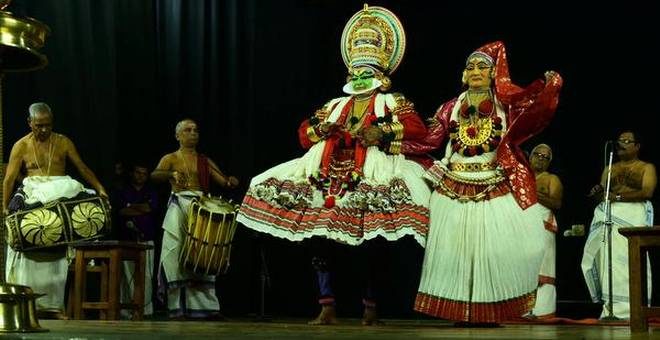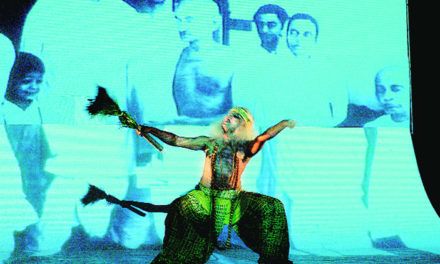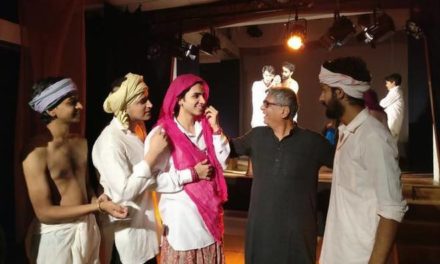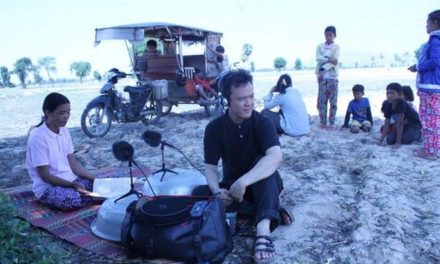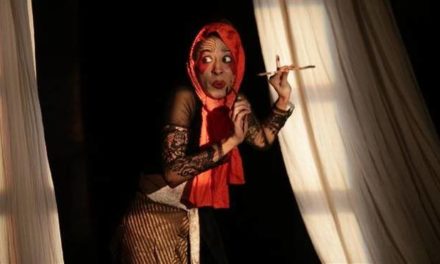As legendary Kathakali artiste Kalamandalam Gopi turned 80, a four-day fete was organised in Thrissur in his honour from June 1 onwards. A cultural extravaganza in connection with his birthday celebrations, held at Model Regional Theatre and Lulu Convention Centre in Thrissur, witnessed packed audiences.
In addition to overnight Kathakali recitals, for those fond of percussion, there was Keli led by celebrated percussionist Peruvanam Kuttan Marar on the very first day and a Thruthayambaka helmed by the unmatched Mattannoor Sankarankutty Marar on the second day.
For Pattikkamthodi Ravunni Menon, doyen of the Kalluvazhi School of Kathakali, Dharmaputra in the play Kirmeeravadham of Kottayathu Thampuran, was his favourite character. His prashishya, (disciple’s disciple), Gopi performed the same character on the opening day.
Excellent portrayal
He depicted through angika and satwikaabhinaya an anguished Dharmaputra addressing his consort Panchali as they were destined to lead a miserable life in the forest. The padam Bale kel nee in the slow-tempo chembada tala has an iratti (meticulously executed kalasam) which too shared the sthai (dominant mood) of sokam (anguish), of the character thanks to Gopi’s prudent portrayal of the poignant scene. Gopi, as usual, was at his best, in bringing out the contrast between the present predicament of the Pandavas and their grand days of yore with the charanam Manimayasadane mohanasayane.
Gopi’s contemporaries K.G. Vasudevan as Panchali, Kalamandalam Kuttan as Dhoumyan, Kalamandalam Muraleedharan Nair as Sooryan (Sun) and Vazhenkada Vijayakumar as Krishna exuded sincerity on stage. Yet there was an obvious lack of warmth in their communications with Dharmaputra. Nelliyodu Vasudevan Namboodiri as Sudarsanam seemed determined on executing each and every mudra of his padam even though the context did not demand it.
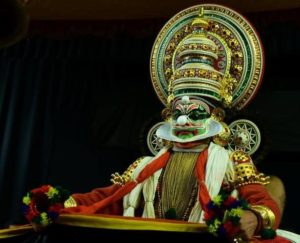
Photo Credit: Praveen Iyyani
Nuanced performance
In the second play, which was Irayimman Thampi’s Utharaswayamvaram, Kottakkal Nandakumar poignantly played the role of king Duryodhana. He enacted the famous segment Ekalochanam, in which the expressions of soka (sorrow) and kopa (anger) flashed across his eyes intermittently. Nandakumar effortlessly switched from sringara (romance) to veera (valour) with the entry of the Doothan (messenger) who brings the sad news of the death of Keechaka at the hands of a mighty foe.
As Utharan, Kalamandalam Pradeep was a delight to watch as he fluently portrayed the character flirting with women in the first half and his cowardice the moment Brihannala advances towards the Kauravas in the second half. Kottakkal Kesavan Kundalayar did a neat depiction of the character Brihannala. Had he been a bit more charismatic, it would have added to the luminosity of Brihannala who sheds his femininity and becomes the invincible Arjuna to fight against the Kauravas.
Madambi Subramanyan Namboodiri and his gifted disciples sang the slokams and the padams in Kirmeeravadham in complete adherence to the visual rhythm of each and every scene. Although effervescent was Kottakkal P.D. Namboodiri’s rendering of Utharaswayamvaram, he did not pay adequate attention to sahitya and melody in the appropriate contexts.
Kalamandalam Unnikrishnan was instrumental in tracing minimalist movements and vivid expressions of Gopi as Dharmaputra on the chenda while Kalamandalam Narayanan Nambeesan played the maddalam with composure.
The accompanists spared no efforts to ensure a smooth flow of melam through and through.
On the second day, late in the evening, Kottakkal Chandrasekhara Warrier appeared as Ravana in Balivijayam. Kailasodharanam and Parvathiviraham, two segments from the play, underscored the histrionic deftness of Warrier. The first one elaborates Ravana’s effort to lift the mountain Kailasa and its aftermath while the second one is about Parvathi’s tiff with Siva when she discovers his affinity with Ganga and how it is resolved when Kailasa, Lord Siva’s abode, is lifted by Ravana. Kalamandalam M.P.S. Namboodiri as Narada could instigate in Ravana the many dimensions of pride. In Duryodhanavadham, which followed, a host of talented actors including Kalamandalam Ramakrishnan, Oyyur Ramachandran and Kalamandalam Soman performed.
Distinct style
On the third day evening, Naripatta Narayanan Namboodiri’s portrayal of the hunter in Nalacharitham (II Day) was noted for its distinctive and refreshing presentation. Kalamandalam Krishnakumar enacted Bahuka in Nalacharitham play (III Day) with his characteristic proclivity for emotive acting.
While seasoned artiste Chavara Parukutty performed the role of Damayanthi, veteran actor Mathoor Govindankutty enacted the Brahmin, Sudeva persuasively. In the second play, Dakshayagam, Peesappilly Rajeevan’s Daksha and Kottakkal Devadas’ Veerabhadra impressed the audience with their nuanced treatment of the characters and the artistes’ theatrical competence. Ace vocalists and percussionists enriched the visual dynamics of each play.
On the final day, following the pakuthipurappad was Melappadam with Kottakkal Madhu and Nedumpally Rammohan as vocalists, Kalamandalam Krishnadas and Panamanna Sasi on the chenda, and Cherpulasserry Sivan and Kottakkal Ravi as maddalam players. As thee artistes began displaying their individual creativity and collective vigour, the audience became spellbound. Kuchelavritham Kathakali was staged soon after. Maestro Kalamandalam Vasu Pisharody enacted Kuchela and Madavoor Vasudevan Nair appeared as Krishna. It was an unusual combination. Lavanasuravadham, Keechakavadham and Sreeramapattabhishekam, were also staged. All in all, it was a spectacular event that celebrated Kalamandalam Gopi.
This article was also published on The Hindu on June 15th 2017. Reposted with permission. Read the original article here.
This post was written by the author in their personal capacity.The opinions expressed in this article are the author’s own and do not reflect the view of The Theatre Times, their staff or collaborators.
This post was written by V. Kaladharan.
The views expressed here belong to the author and do not necessarily reflect our views and opinions.

